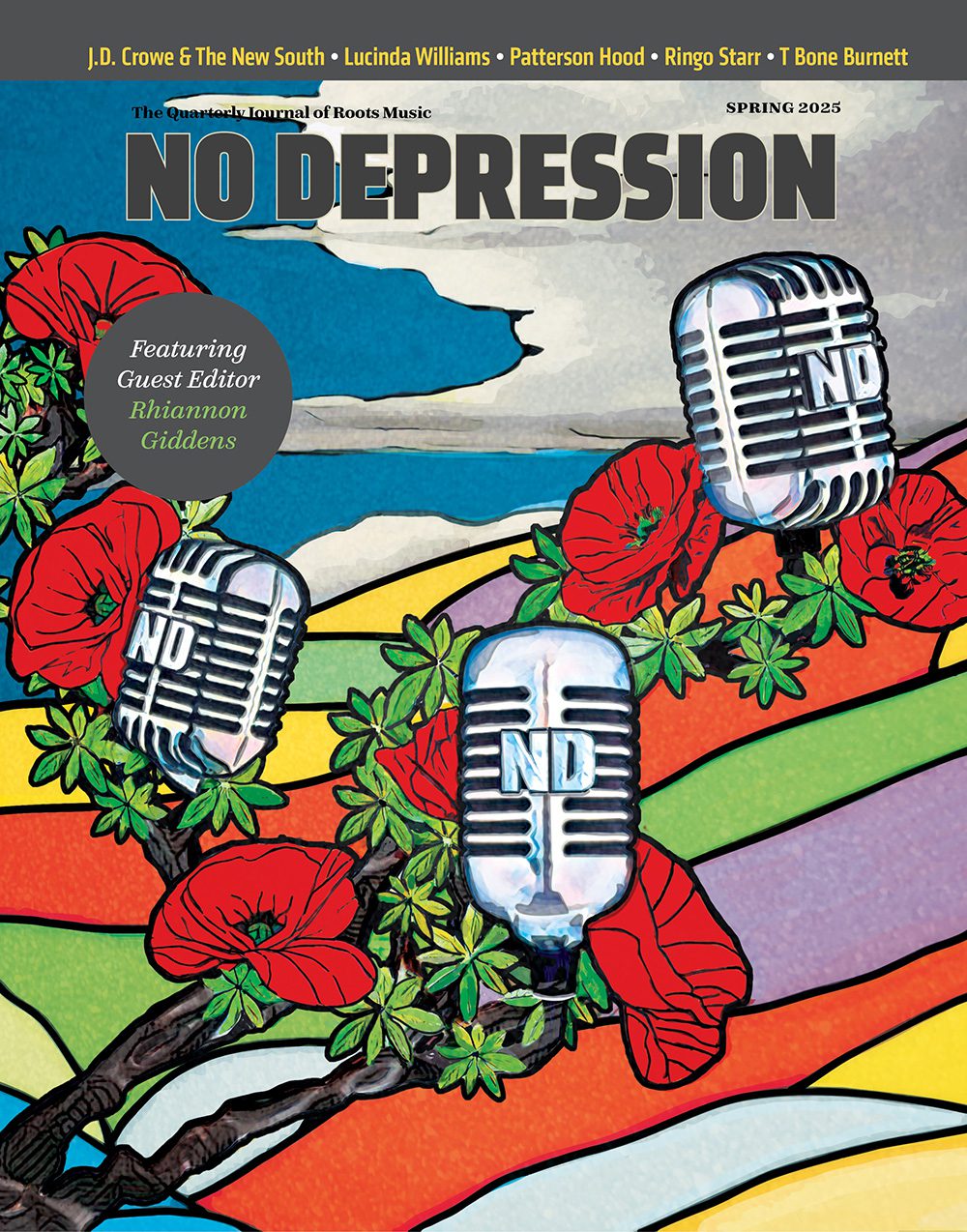Porter Wagoner – The Thin Man
But Wagoner wasn’t quite there just yet. The following year, thanks to some hard work by a station manager who became his manager, he auditioned for RCA Records producer Steve Sholes, and was signed to the label. He cut more than a dozen sides for RCA, including his own “Trademark”, which went all the way to #2 for the smooth-voiced Carl Smith in July 1953, but there was little to distinguish his records from those made by the artists who influenced him, such as Smith and Hank Williams (his very first one, “Settin’ The Woods On Fire”, offered an almost uncanny imitation of Williams).
Disappointed with the results, RCA released Wagoner the following year. In order to keep working, he hit upon the then-unusual tactic of offering to play dates in and around Missouri for the door proceeds only, without the usual guarantee of at least a minimum fee.
That was successful, but it was hardly enough for a man determined to make a career out of music. Already convinced of the power of a great song, he realized he had found one on an obscure Starday record. “Great material, that’s the key to it,” he says, pointing out that the songs on The Best I’ve Ever Been are what convinced him to do the album in the first place. “It don’t make a damn how close you sing the harmony; if you’re singing material that ain’t great material, it won’t work.”
The song he’d found was “A Satisfied Mind”, co-written by fiddler Joe “Red” Hayes (an old friend and former bandmate of Texan Charlie Walker) and Jack Rhodes (a 1972 inductee into the Nashville Songwriters Hall of Fame). Country music historian Bill C. Malone, in his book Country Music USA, calls it “one of the most finely crafted songs in country music.”
“We were going to play a dance down in Arkansas, me and the two guys who were singing with me. They didn’t know when to come in, you know, and that’s how we come up with that style,” Porter explains, referring to the way the first and third lines of each verse in his version of “A Satisfied Mind” are started off by Wagoner’s resonant baritone before the harmony singers join in. “In the car, going down there, we just accidentally come up with that.
“Well, we sung the song that night at this dance we played there, at the American Legion, and you know, when you’re playing a dance, people don’t pay that much attention normally. But boy, they really loved that song, and they listened, and when we finished, man, it just got more applause than all the other songs put together. So when we went back home we got it worked up some more, and just got it to where we could sing it pretty good, and I got the guy at the radio station to record us doing it on a two-track machine, and sent it to RCA.”
Sholes also had the sense to recognize a good song, and Wagoner was re-signed to the label. Preceded in release by the jaunty rural novelty tune “Company’s Comin'”, which crept into the DJs’ Top Ten — “it kind of got them acquainted with me and my music,” he says — “A Satisfied Mind” shot to #1 in the spring of 1955, lasting a remarkable 33 weeks on the charts (there were three of them at the time: airplay, sales and jukebox spins) and spawning covers by Jean Shepard and Red Foley that were almost as successful.
Foley saw enough in Wagoner to invite him to join the cast of his pioneering TV show, the Ozark Jubilee, fed to the ABC network by KWTO’s sister television station. “I learned an awful lot about communicating with an audience from Red Foley,” Porter says. “Red Foley was a great communicator, a wonderful singer and entertainer. I watched him, and learned a lot from him.
“Probably one of the most important things I learned from Red Foley about communicating with a crowd was, don’t ever talk like you’re talking to a crowd, because then you come across like a politician,” he laughs. “He said, ‘Make it like a one-on-one. They’ll all hear you, but make it like you’re talking to a friend.’ And I found that to really work.”
While he was honing his performance skills, and taking a good, hard look at how a country music TV show worked — observations that later informed his own syndicated program — Wagoner continued to draw airplay and attention with a set of singles that did well on the charts (though none quite as well as “A Satisfied Mind”) while revealing his flexibility as a performer and the broad range of his musical interests.
“Eat, Drink, And Be Merry” was an obvious follow-up to “A Satisfied Mind”, a midtempo waltz that duplicated the earlier hit’s vocal arrangement. He followed it with a rhymed recitation, “What Would You Do? (If Jesus Came To Your House)”, which introduced an enduring strain in his music: Its homespun gospel message, and an intimate, almost conversational address to the listener, demonstrated how Wagoner was applying Foley’s lesson not only to live appearances, but to recordings as well. Next came a spirited cover of Bill Monroe’s “Uncle Pen”, and then the bluesy “Tryin’ To Forget The Blues” (which harked back to the easy swing of “Trademark”) and the mournfully tender “I Thought I Heard You Call My Name.”




